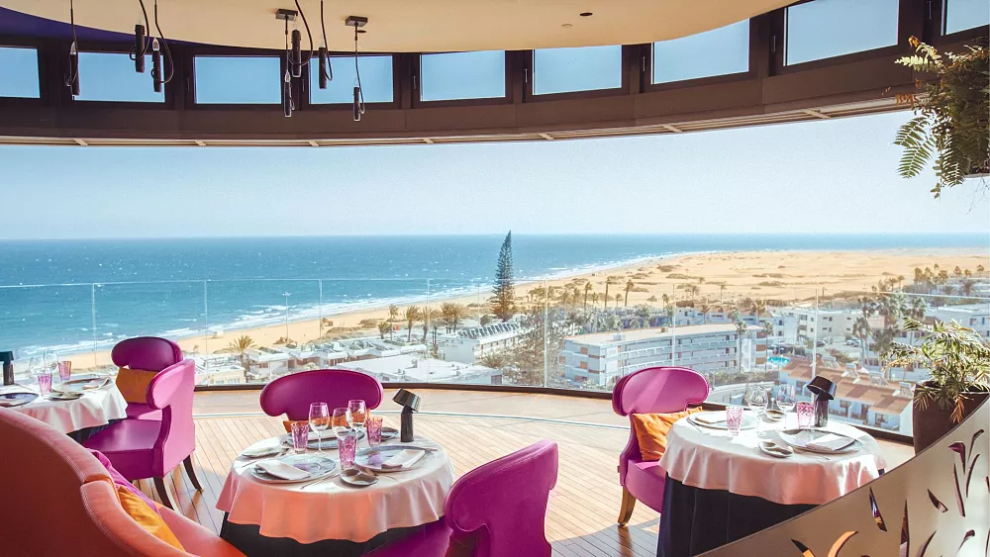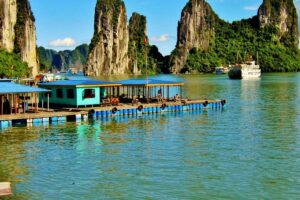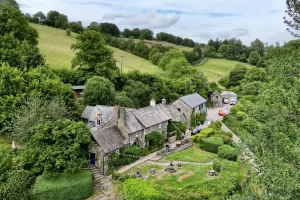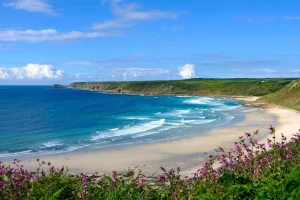The first thing that struck me as I arrived in Gran Canaria was the spinning white blades that dotted the horizon. I later learnt that these wind turbines generate 20 per cent of the island’s energy, far higher than the European average.
You might not expect Gran Canaria to be at the centre of Europe’s renewables transition. But this island – popular ever since 19th century doctors recommended their patients improve their ‘constitutions’ by bathing in its thermal waters – is full of surprises.
Wipe the image of crowded beaches full of ‘fly and flop’ tourists from your mind. The Gran Canaria I discovered rivals the European capitals for culture, food and nature.
How to travel to Gran Canaria
Gran Canaria is the third largest Canary Island and it rotates with Fuerteventura and Lanzarote to be the capital of the province, Las Palmas.
Holidaymakers tend to book their holiday to just one of the Canary Islands and stay put. This is a shame, because it’s quick and easy to travel between the seven islands. There are ferries between some of them and flights between almost all of them, so it’s easy to have a multi-stop holiday.
I travelled to Gran Canaria from Fuerteventura. There are a few different ferry routes, depending on where on the islands you travel to and from, but I took the 2-hour Fred Olsen Express service.

If you’re travelling from outside Spain, there are direct flights from many European countries to Gran Canaria. The majority of tourists on the island come from the UK, Germany and Scandinavia, so these are the best connected by air.
You’ll land at Las Palmas de Gran Canaria airport, the only one on the island. From there, it’s an easy 40-minute drive along well signposted highways to the beach resorts in the south, or 15 minutes to the capital city, Las Palmas de Gran Canaria, in the north.
What are the best things to do in Las Palmas de Gran Canaria?
The capital of Gran Canaria is Las Palmas de Gran Canaria – not to be confused with Las Palmas, the province.
It’s the biggest city on any of the Canary Islands and it has a real buzz about it. Gran Canaria has a unique culture that shines through during city-wide events, so it’s definitely worth looking up what’s on. Carnival in February and March is a popular highlight but there are cultural events year-round.
Las Palmas de Gran Canaria’s main beach is Las Canteras. It has previously been voted one of Spain’s best beaches and it’s not hard to see why.

City beaches tend to be a bit dirty and often crowded, as the only places for city dwellers to flock to on a sunny day. But Las Canteras is clean and, at 4km long, there’s plenty of space for everyone.
The beach has a promenade of restaurants, cafes and shops to suit every taste. We were there on a warm Sunday afternoon and many locals were out for a walk or lunch.
To understand the history of Las Palmas de Gran Canaria, you must head to Vegueta, the old town. This is where the Castillian army landed in 1478, leading to battles here between the natives and the colonisers. The Spanish named the first settlement Real de Las Palmas and it’s from that the town of Vegueta was born.
Fast forward to today and it’s an area of quaint little streets and gorgeous architecture. We were there in the afternoon – ‘siesta’ time – and we were some of the only tourists around which felt very special. We wandered in and out of free art exhibitions and sat down for a coffee to take in the surroundings. Vegueta was one of the highlights of our trip so don’t miss out on it.
What is there to do for foodies in Gran Canaria?
In a very Mediterranean way, food and drink is highly revered in Gran Canaria. You don’t eat to live here – it’s very much the other way round. There is an abundance of produce grown or made here and it is all done with care and love.

To really understand the difference this makes to quality and taste, you must seek out local produce. This is not the place to do a big supermarket shop on arrival and be done with it. Instead, head to local food markets and small grocery shops. Not only will they be run by friendly locals who are passionate about the food on sale but they’ll also be happy to give you recommendations. Their produce is likely to be grown in the surrounding areas – and this will come through in the taste, I promise you.
As part of our tour with Guillermo Bernal we visited two places where love and care for food really shone through.
Arehucas Rum Distillery: Work up an appetite on a rum tour before a tasting session
Arehucas is the rum of Gran Canaria. If you go to a barbecue or house party, there’s guaranteed to be a bottle doing the rounds.
On a visit to the distillery, you’re taken on a journey through the history of rum, learning all about how Arehucas is made. This is a truly artisanal process. They don’t cut any corners, there’s quality testing at every step of the process and it’s all overseen by a rum master- an enviable job title if ever I heard one.

My favourite part of the tour was the galleries of rum casks, 4,308 in total. Many of them are signed by famous people who have visited.
The tour ends with a tasting session. The distillery makes 9 different products, all with a unique flavour. You can take home a bottle or two as a souvenir, of course.
The Arehucas experience takes 45 minutes and tours run Monday to Friday year-round. However opening times vary so do check. Sugar cane harvesting takes place in March so if you want to see the rum factory in full swing, April is the best time to visit.
Arucas: A undiscovered gem in Gran Canaria
If you visit Arehucas, don’t miss out on a walk around the local town of Arucas. This is where the famous rum gets its name from.
This small hilltop town is full of colonial architecture and has gorgeous views down to the sea. It’s pleasant to wander its winding streets and admire the interesting trees and plants in its small municipal park.
The architectural gem of Arucas is the Church of San Juan Bautista. Its elaborate design means it’s often mistaken for a cathedral and it’s clear from the style who the architect studied with – none other than Gaudi.
Hacienda La Rekompensa: Go bananas in this fascinating plantation
A short drive from Arucas, a traditional ‘finca’ house has been lovingly restored to create a beautiful focal point for the surrounding 7,000 banana plants.

The fascinating attraction oopened just a few years ago, though the house has been here since 1804.
A visit to Hacienda La Rekompensa includes a tour of the plantation where they grow 13 different varieties of banana. We were shown around by a guide with such passion for bananas and the growing process that I left with a new appreciation for this everyday fruit.
The best bit, as with any food tour, was the tasting. Sat in a sunny courtyard with other visitors, we tried different varieties of banana as well as a jam and chutney – served on cheese. This may sound like a strange combination but trust me, it worked.
Tours of Hacienda La Rekompensa take 1 hour and can be booked online.
Where is the best hotel in Gran Canaria?
Where to book your accommodation really depends on what you want out of your trip. If you’re here for a weekend break, Las Palmas de Gran Canaria is perfect for exploring the city and experiencing all the cultural and food highlights.
If you want to be close to nature and you’re not bothered about being near the sea, Tejeda in the centre of the island is perfect.
To be close to the beach and lively nightlife, opt for Maspalomas .
Our hotel was in Playa del Ingles. This area isn’t short on hotels and holiday apartments but we stayed in the sustainably-minded Bohemia Suites and Spa. Rather than building a new hotel from scratch, the owners of this hotel refurbished and refitted a pre-existing building. Specifically, Playa del Ingles’ first ever hotel, built in the 1960s.
Not that you would know its age from the fresh and modern design and decor, best displayed in the 360° panoramic restaurant on the top floor. This is the literal icing on the cake and the whole level was a smart new addition to the old hotel. The circular room has incredible views over Playa del Ingles, the Maspalomas dunes and the blue sea beyond.

The restaurant’s extensive menu is an eclectic mix of local and international dishes. The sommelier will be happy to recommend wines from the many bottles on display. The food service was excellent, with seamless catering to our dietary requirements.
Breakfast is also served in the restaurant making for a sunny start to the day. There is a buffet as well as hot dishes made to order. As a non-coffee drinker, the loose leaf tea station was a highlight.
If you just want to have a drink, Atelier Cocktail Bar, part of the restaurant, has an amazing outdoor terrace which makes for the best rooftop bar in Gran Canaria. Both the restaurant and cocktail bar are open to the public, not just hotel guests.
The rest of the hotel matches up in style, with bright colours and lots of light throughout. There’s a wide range of room types, from doubles to suites.
Bohemia caters to everyone from holidaymakers to remote workers, but it’s worth noting that it’s adults only. The studios and junior suites are very well set up for digital nomads thanks to the kitchen and dining table to work at. They’ll even lend you a screen, mouse, keyboard and office chair to make your work day more comfortable.
What particularly stood out to me at Bohemia was how often I was asked for my feedback. Most hotels do this but here they really seem to act on it. As an example, rooms used to be equipped with iMacs, intended for working on or watching TV. But when feedback told them guests didn’t know how to use the computers, they replaced them with smart TVs. This kind of care and attention shows they put time and money into ensuring their guests have as relaxing and stress-free a stay as possible.
Want a European holiday with guaranteed good weather? Gran Canaria ticks all the boxes
Bohemia Suites and Spa symbolises Gran Canaria in 2023. They built a new hotel in place of an old one and with it they have attracted a new type of holidaymaker. A more discerning type of traveller who likes good style, tailored service and lovely facilities. The type of tourist who wants to get beneath the skin of a destination; seeking out locally made or grown foods, understanding the history and culture and leaving informed, as well as rested.
I left Gran Canaria with a strong sense of how it has got to where it is today; all the influences that have shaped the culture into what it is today.
The island has left behind the extractive tourism that has blighted many parts of Europe for decades. In place, you’ll find a vibrant and varied island that’s full of people who can’t wait to show you their home.
Source : Euro News



























